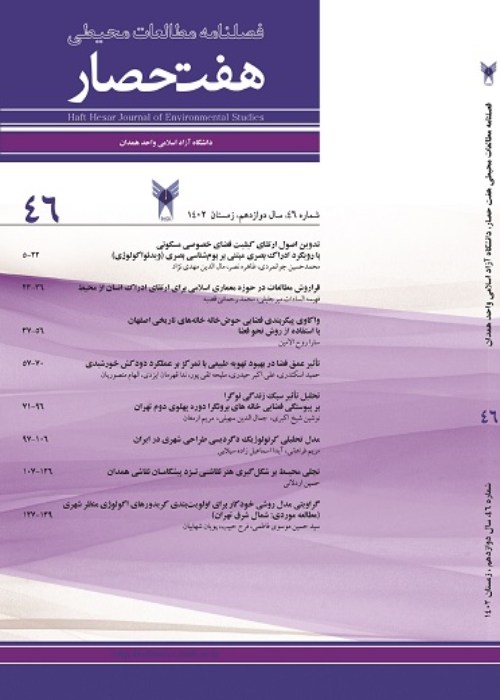Content analysis of Place-oriented crimes in Tehran city during the period of 1390-1398, case study: Narmak, Naziabad and Poonak neighborhoods
Cultural diversity, ethnicity, differences in language, and different living crimes are among the most enduring challenges of urban life, and insecurity is a priority category in the quality of life in urban spaces. The big city of Tehran has the highest share of the population to urban population in the whole country and is the most criminal city in Iran. New readings of place and placed-based micro-centered analyses are among the new operational strategies for crime prevention that have not been considered theoretically and operationally by the authorities and thinkers in the field of urban security in Iran. This study examined the statistical and place-based features on final places of crimes in three neighborhoods of Tehran.
The study approach is quantitative, and the research tools are quantitative content analysis with the help of inferential propositions and mixed micro-scale and medium-scale analytical-criminological indicators. The statistical population of the research includes daily-police based news events recorded in seven national newspapers of "Iran", "Kayhan", "Etemad", "Shargh", "Jam Jam", "Donya-e-Eqtesad" and "Resalat" in the full-text database of "MagIran" website from the beginning of 1390 to the end of 1398 h, 1100 cases, and 290 crime sites. The research area includes three neighborhoods of Narmak neighborhood, Naziabad neighborhood, and Poonak neighborhood.
The crimes of robbery, extortion, and murder had the highest expected crime rates among the target neighborhoods, respectively. Robbery in the Narmak neighborhood and extortion and murder in the Naziabad neighborhood have been more frequent. With the comparative statistical-place-based indicators, the Naziabad neighborhood has more urban insecurity problems than the other two neighborhoods. The place of residential houses in the crime of robbery and the network of roads in the crimes of extortion and murder have been the main crime sites..
The privacy of citizens and the public space of movement such as streets and squares in these three geographical spaces had a much higher coefficient of insecurity than property places. Finally, place-oriented analyzes are presented separately for statistical and place-based features of crimes. Suggestions like implementing place management techniques on housing plots and network street and square places are provided for each neighborhood and future studies.
- حق عضویت دریافتی صرف حمایت از نشریات عضو و نگهداری، تکمیل و توسعه مگیران میشود.
- پرداخت حق اشتراک و دانلود مقالات اجازه بازنشر آن در سایر رسانههای چاپی و دیجیتال را به کاربر نمیدهد.



